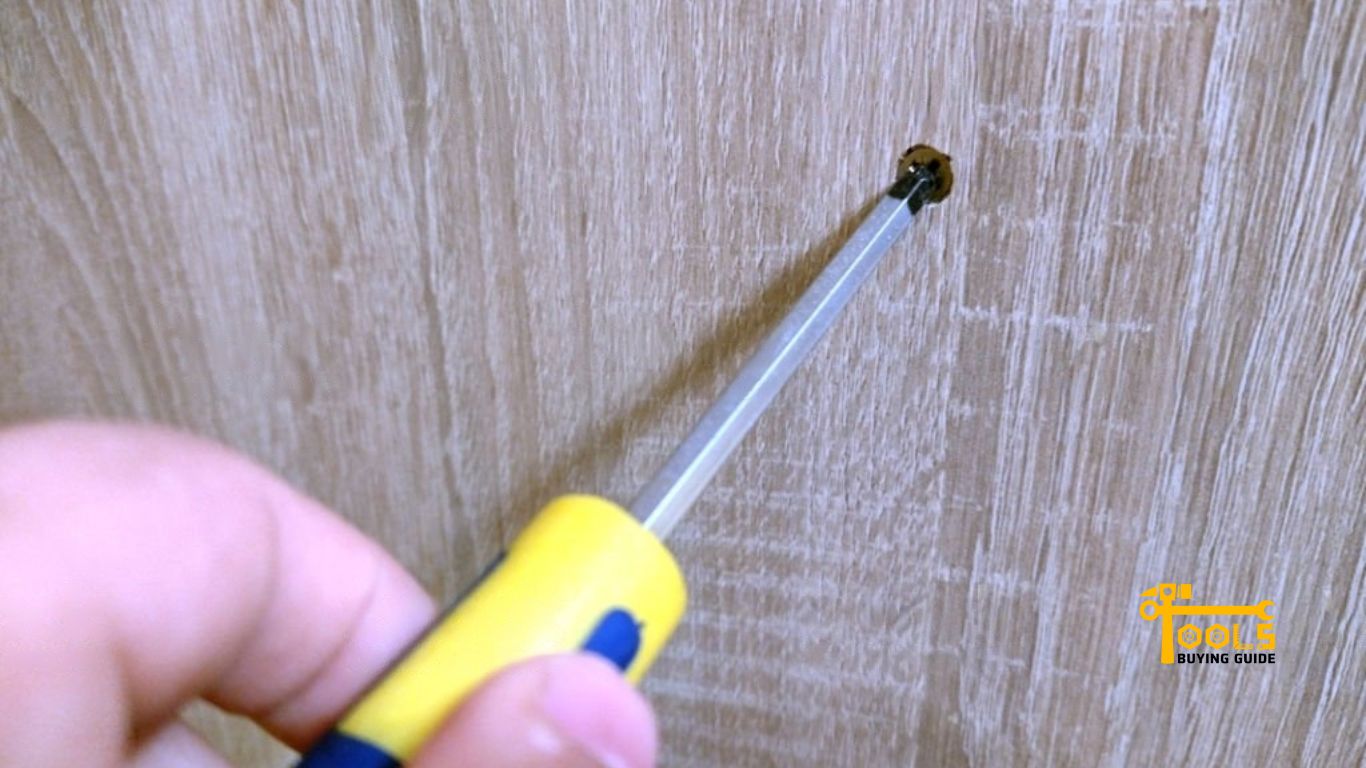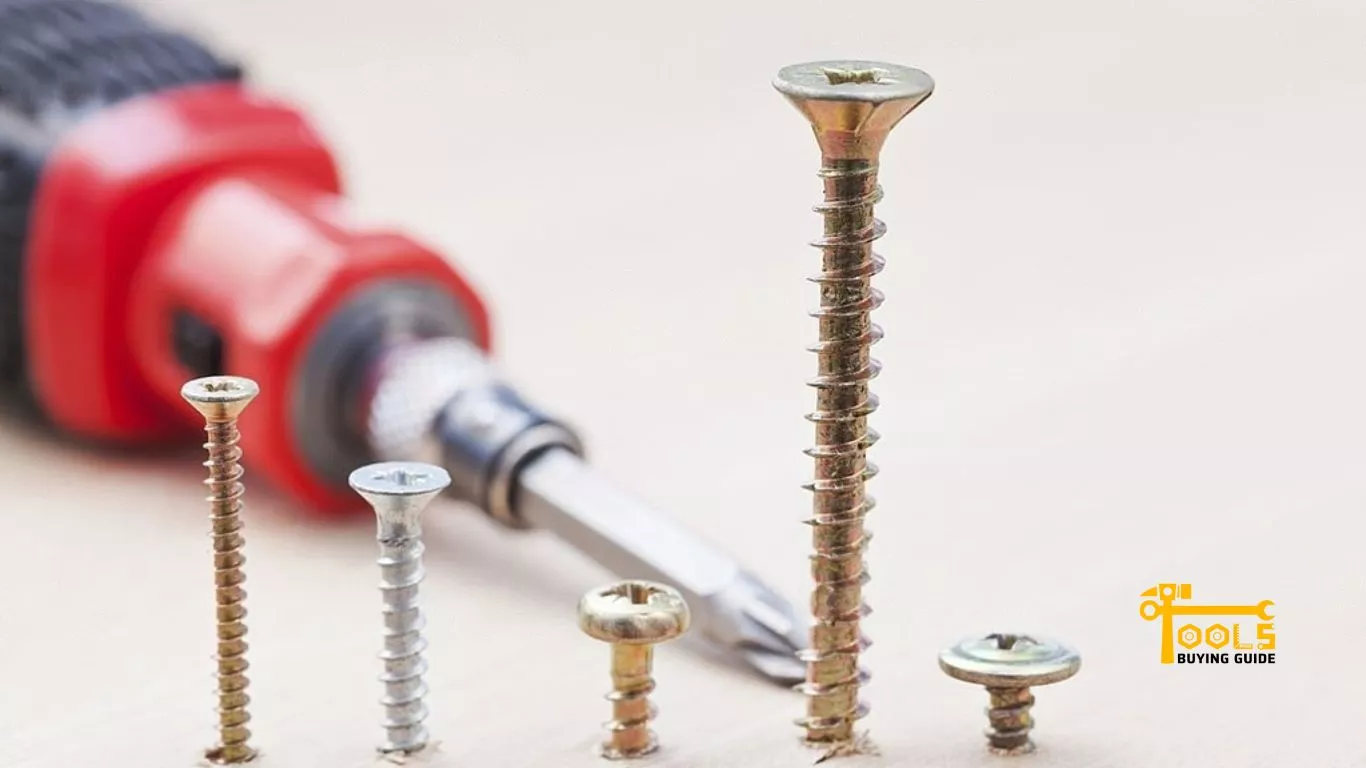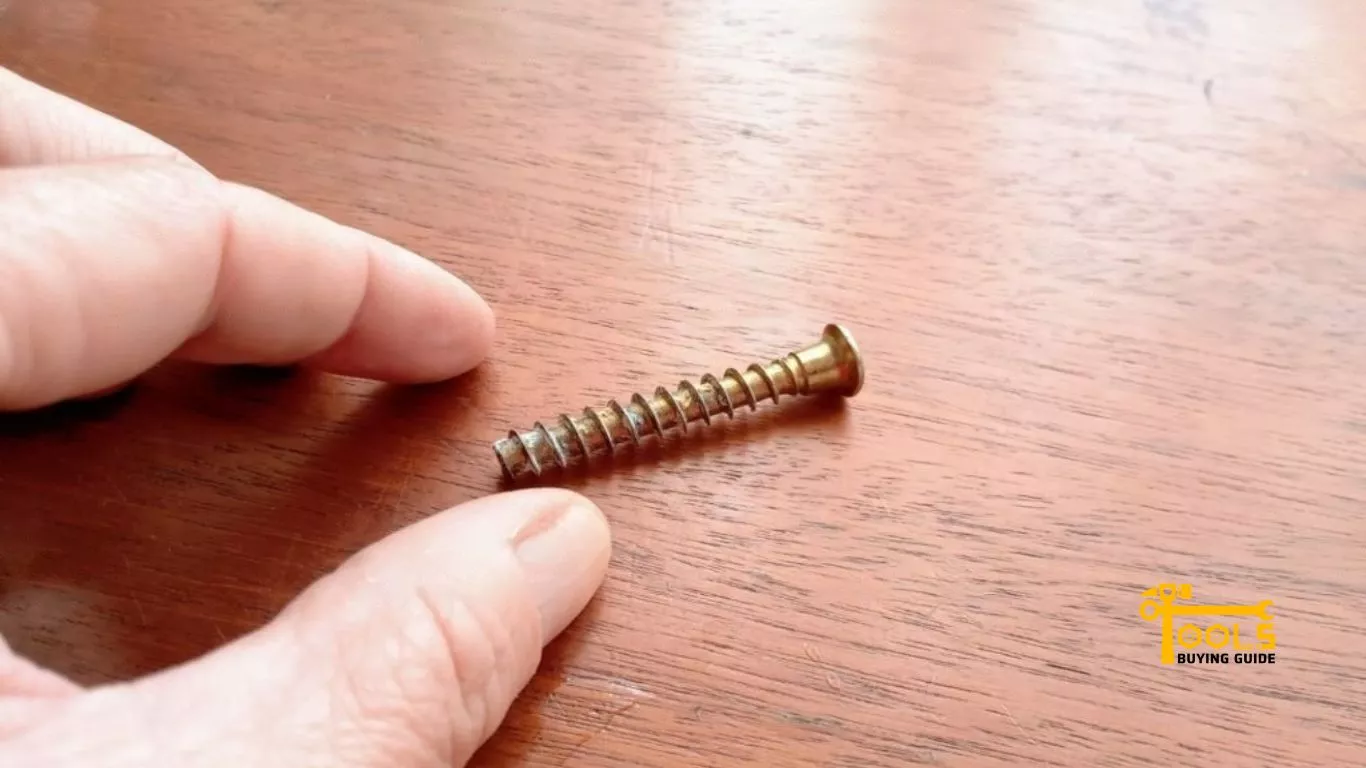How To Get A Stripped Screw Out: Your Complete Guide To Fastener Freedom
It's a common DIY nightmare, isn't it? You're really trying to get a stripped screw out, perhaps in the middle of a project, and suddenly that screw head just gives up. Trying to figure out how to remove a stripped screw can quickly derail your plans, leaving you feeling stuck and a bit frustrated. My text mentions that stripped, or stuck, screws can quickly derail your projects, and that's just so true for many of us.
This annoying little problem happens when the grooves on the screw head wear down, making it impossible for your screwdriver to get a good grip. You might turn and turn, but the screw just sits there, refusing to budge. A stripped screw can be difficult to remove, especially when you're not quite sure what to do next. That feeling of being totally stuck is something we all know, so it's understandable why you'd be looking for help right now.
But don't you worry, because getting an uncooperative fastener out of whatever you've drilled into is absolutely possible. My text reassures us that there are all sorts of tips and tricks for this very thing. We've put together a complete guide, as my text says, to show you how to remove a stripped screw using professional tips and tricks, and to help you find out the best tools for tackling this common DIY problem. You'll learn how to get a stripped screw out using simple tools and techniques, so you can get the job done quickly and avoid damage, which is pretty important, honestly.
- 16 Guard Buzz Cut
- Caramel Highlights On Brown Hair
- Is Clarke From Love Island Trans
- How To Make Birria Tacos
- How Do I Say Goodbye Lyrics
Table of Contents
- What Exactly is a Stripped Screw?
- Patience is Your Best Friend
- Basic Methods for Stripped Screws: Using Everyday Items
- Advanced Tools for Stubborn Screws
- Specific Materials: Wood, Metal, or Plastic
- Frequently Asked Questions
What Exactly is a Stripped Screw?
So, what is a stripped screw, really? Well, my text explains that screws become stripped when their heads, the part your screwdriver is supposed to grip, get damaged. This damage usually means the slots or the Phillips head indentations wear down, making them too shallow or misshapen for a tool to catch properly. This happens a lot, especially if you're using the wrong size screwdriver or applying too much torque, so it's kind of a common issue for many people.
When you try to turn a stripped screw, your screwdriver just spins freely, without actually engaging the screw. It's like trying to open a door with a key that no longer fits the lock, you know? This can happen with screws in wood, metal, or plastic, and it often leads to a lot of head-scratching, honestly.
Patience is Your Best Friend
My text gives us some really good advice right from the start: "When removing a stuck screw, remain patient." This is, like, super important. It's easy to get frustrated and just want to yank the screw out, but that often makes things worse, you know? A calm approach can really save you a lot of grief and prevent further damage to your project.
- How To Say I Love You In French
- Ball Up Top Meaning
- Business Class Vs First Class
- A Court Of Shaded Truths
- Korean Language For I Love You
Also, my text says, "When one method doesn’t work, don’t give up." This is a key mindset to have when you're trying to figure out how to get a stripped screw out. Sometimes, the first thing you try might not do the trick, and that's totally okay. There are many ways to approach this, and usually, one of them will work out for you, so just keep trying.
Basic Methods for Stripped Screws: Using Everyday Items
A big challenge of knowing how to remove stripped screws is figuring out what kind of tool might work, my text mentions. But the good news is, you don't always need fancy equipment. Often, some common household items can actually do the job pretty well. We'll walk you through several ways to remove a stripped screw using tools you probably already have, so that's a plus.
The Rubber Band Trick
This method is, honestly, a bit of a classic for how to get a stripped screw out. My text suggests reading on to learn how to unscrew a stripped screw using rubber bands. You just need a wide rubber band, the kind you might find on a bunch of broccoli or asparagus, or maybe a thicker one.
You place the rubber band flat over the stripped screw head. Then, you press your screwdriver firmly into the screw head, right through the rubber band. The rubber band fills in the gaps where the screw head is stripped, giving your screwdriver some extra grip. Then, very, very slowly, you try to turn the screw counter-clockwise. This method can be surprisingly effective for screws that are only slightly stripped, so it's worth a shot.
Pliers: A Firm Grip
Sometimes, if a screw head is sticking out just a little, you can grab it with a pair of pliers. My text says, "Or, try rotating the screw with pair of pliers." This is a pretty straightforward method, actually. You want to use locking pliers or vice grips if you have them, because they can hold onto the screw head really tight.
Just grip the head of the screw as firmly as you can with the pliers, and then twist it counter-clockwise. This works best when the screw isn't completely flush with the surface. If it's a bit recessed, though, this method might not work as well, you know, because you can't get a good grip.
The Shorter Screwdriver Approach
My text offers another good idea: "Unscrewing a stripped or stuck screw use a shorter screwdriver with a larger head to apply downward pressure to the screw." This is a clever way to get more leverage. A shorter screwdriver often lets you push down harder, which can help the bit engage with any remaining grooves in the screw head.
You want to choose a screwdriver that has a bit that's just a little bit bigger than what you'd normally use, or one that has a really sharp, undamaged tip. Push down with all your might, and then slowly try to turn the screw. The added pressure can sometimes make the difference, honestly, by forcing the bit into the damaged head.
Steel Wool or Abrasive Pads
Similar to the rubber band trick, you can sometimes use a piece of steel wool or even a small abrasive pad to create more friction. My text mentions unexpected household items like a rubber band or steel wool, so this is another one to consider. Just place a small piece of steel wool over the stripped screw head, then press your screwdriver into it.
The tiny fibers of the steel wool can fill in the gaps and give your screwdriver something extra to grip onto. Apply a lot of downward pressure and turn slowly. This method is, like, surprisingly effective for those really stubborn screws that are just slightly stripped, so it's worth trying before moving on to more intense tools.
Advanced Tools for Stubborn Screws
Sometimes, the basic methods just aren't enough, and that's okay. When you're really struggling with a stripped screw, you might need to bring out some more specialized tools. My text says we'll show you how to remove a stripped screw with everything from special kits to unexpected household items, and now we're getting into those special kits, actually.
Using a Drill Bit to Create a New Slot
If the screw head is completely rounded out, you might need to create a new way for a tool to grip it. My text suggests learning how to remove a broken screw with drill bits. While it mentions broken screws, the principle can apply to severely stripped ones too. You can use a small drill bit, just a bit smaller than the screw's shaft, to drill a very shallow hole right into the center of the stripped screw head.
Once you have that small pilot hole, you can try using a flathead screwdriver that fits snugly into the new slot you've created. This method requires a steady hand and a lot of care, because you don't want to drill too deep or off-center, you know? It's really about making a new purchase point for your screwdriver.
The Power of a Screw Extractor
For truly stubborn stripped screws, a screw extractor tool is often your best bet. My text also suggests learning how to remove a broken screw with a screw extractor tool, and these are incredibly handy. Screw extractor kits usually come with two parts: a drill bit and the extractor itself.
First, you use the drill bit from the kit to drill a pilot hole into the center of the stripped screw head. This drill bit is designed to create a clean, precise hole. Then, you switch to the extractor bit. This bit has a reverse thread, meaning it's designed to grip as you turn it counter-clockwise. As you slowly turn the extractor into the pilot hole, it bites into the metal of the screw, eventually gripping it firmly enough to back it out. This is, like, a really reliable method for many situations.
You can usually find these kits at any hardware store, and they're honestly a worthwhile investment if you do a lot of DIY projects. They're specifically designed for how to get a stripped screw out, so they tend to work very well. Just make sure to follow the instructions that come with your specific kit, as they can vary slightly.
Tackling a Broken Screw
Sometimes, the screw doesn't just strip; it actually breaks off, leaving part of the shaft embedded in the material. My text specifically mentions learning how to remove a broken screw with drill bits, pliers, or a screw extractor tool. If a piece of the screw is still sticking out, pliers might work, as mentioned before.
If it's broken flush or below the surface, you'll likely need to use a screw extractor. The process is pretty similar: drill a pilot hole into the center of the broken shaft, then use the extractor to grip and twist it out. This can be a bit more challenging, honestly, because there's less material to work with, but it's certainly possible with the right tools and a bit of patience.
Specific Materials: Wood, Metal, or Plastic
The material the screw is embedded in can affect your approach. My text tells us to learn how to remove a stripped screw from wood, metal, or plastic with basic methods and tools. Each material has its own quirks, so it's good to be aware of them.
Wood: Screws in wood are often a bit more forgiving. If a screw is stripped in wood, you might be able to use a slightly larger screwdriver or even tap the screwdriver into the stripped head with a hammer to get a better bite. The wood itself is softer, so it's less likely to damage your tools as much. You can also try drilling a very small pilot hole next to the screw, then using pliers to gently wiggle the screw out, which can be pretty helpful.
Metal: Screws in metal can be much tougher. The metal is harder, so getting a grip on a stripped head can be really difficult. This is where a screw extractor tool truly shines. You'll need good quality drill bits that are designed for metal to create the pilot hole for the extractor. Patience is even more important here, honestly, because forcing things can just make the situation worse.
Plastic: Plastic is often softer than wood or metal, but it can also be more brittle. When removing a stripped screw from plastic, you need to be careful not to crack or damage the surrounding material. Using a screw extractor is still a good option, but you might want to start with a smaller drill bit and go very slowly. Sometimes, applying a little heat with a hairdryer can soften the plastic just enough to make removal easier, so that's a neat trick.
No matter the material, remember my text's advice: "A big challenge of knowing how to remove stripped screws is figuring out what kind of tool might work." Experiment a little, but always start with the least invasive method first, which is usually the best way to go about it.
Frequently Asked Questions
What causes a screw to get stripped?
Screws typically get stripped when the head's grooves or indentations wear down. This often happens from using the wrong size screwdriver, applying too much torque, or just having an old, rusty screw. Sometimes, the screw material itself might be soft, or the screwdriver bit might be worn out, so there are many reasons, actually.
Can you remove a stripped screw without special tools?
Yes, absolutely! Many times, you can remove a stripped screw using common household items. My text points out that we'll show you seven different ways to remove a stripped screw using common tools and household items, like rubber bands or pliers. These basic methods are often enough for less severe cases, so it's worth trying them first.
When should I use a screw extractor?
You should consider using a screw extractor when basic methods, like the rubber band trick or pliers, don't work. If the screw head is completely rounded out or if the screw is broken off flush with the surface, a screw extractor is usually your best bet. It's designed specifically for these tough situations and can save you a lot of time and frustration, honestly.
Learning how to get a stripped screw out really means having a few tricks up your sleeve. My text says, "We'll tell you seven ways without getting too frustrated," and that's the whole point, you know? With patience and the right approach, you can totally tackle this common problem. You might find that one method works perfectly for your situation, or you might need to try a few things, but that's just part of the process.
Remember, every stripped screw is a chance to learn a new skill and feel pretty accomplished when you finally get it out. If you're looking for more handy tips and tricks for your next project, you can learn more about home repair solutions on our site, and perhaps you'd like to check out some advice on choosing the right tools for various tasks. For even more detailed guides on specific tools, you might want to visit a trusted resource like Family Handyman for their insights, too it's almost a given that they have good info.
- Jasmine Crockett Husband
- In The Clurb We All Fam
- Help I Accidentally Forgot How Gravity Works
- Do A Barrel Barrel Roll
- Julesari Leaks

How to Get Stripped Screw Out Quickly and Easily

How to Get Stripped Screw Out Quickly and Easily

How to Get Stripped Screw Out Quickly and Easily